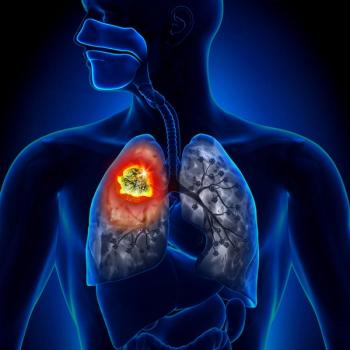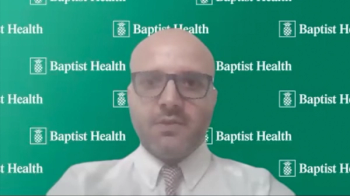
Oncology NEWS International
- Oncology NEWS International Vol 6 No 9
- Volume 6
- Issue 9
Children Run Greatest Cancer Risk from Nuclear Tests
WASHINGTON-Children living in the western United States in the 1950s learned to “duck and cover” at school in case of a nuclear attack, unaware that a more tangible nuclear danger lay in their lunchtime milk cartons.
WASHINGTONChildren living in the western United States in the 1950s learned to duck and cover at school in case of a nuclear attack, unaware that a more tangible nuclear danger lay in their lunchtime milk cartons.
Researchers at the National Cancer Institute have now calculated the levels of human exposure to iodine-131 released by 90 US atmospheric nuclear tests in the 1950s and 1960s. For most people, their largest exposure came from drinking milk produced by cows that had grazed on I-131-contaminated vegetation. Children experienced much greater exposure than adults because their thyroids are smaller and they drink more milk.
The actual risk of thyroid cancer from these exposures will be the subject of a related study due from the Institute of Medicine (IOM), a part of the National Academy of Sciences.
The Department of Health and Human Services (HHS) asked the IOM to form a committee of experts to assess whether such risks can be determined and to recommend how physicians can identify, evaluate, and treat persons who might be at increased risk of thyroid cancer because of their I-131 exposure.
The IOM is currently organizing the effort and expects its review to take about six months once arrangements are completed. In the meantime, the NCI said in a press release, persons concerned about fallout exposure should consult a health professional.
The full 1,000-page NCI report, and its accompanying 100,000 pages of supporting data, is scheduled for release on October 1, but the NCI issued a brief summary of the report last month.
From 2 to 16 Rads Exposure
The report shows that the approximately 160 million people living in the contiguous 48 states at the time of the tests had an average cumulative thyroid dose of 2 rads from I-131 fallout.
The estimates of I-131 exposure, however, varied considerably, depending on proximity to the federal governments Nevada test site, meteorological conditions, age, and milk consumption.
In general, people living in states to the north and east, down wind of the test site, had the highest exposures. Five counties averaged between 12 and 16 rads cumulative exposure (Meagher in Montana and Custer, Gem, Blaine, and Lemhi in Idaho); 19 counties averaged between 9 and 12 rads.
Adults in those counties would have received one-half to one-quarter of those numbers, and children, especially young children, would have received an average of between three and seven times that, NCI director Richard D. Klausner, MD, said at a press conference.
The exposure of children to I-131 is of particular concern, he added, because it appears, from what we know, that only children have a potential risk of developing thyroid cancer as a result of such exposure.
A 1993 Study
Researchers long have known that the exposure of youngsters to external radiation such as x-rays poses a risk of thyroid cancer. In 1993, researchers compared the thyroid cancer risk of children living in Nevada and Utah at the time of the tests, areas with high I-131 fallout, with that of children living in parts of Arizona that had relatively little fallout.
The researchers found a statistically significant association between estimated radiation dose and all thyroid neoplasms (malignant and benign) and some evidence of an association between estimated radiation dose and thyroid cancer, but this was not statistically significant. The small number of thyroid cancer cases made it difficult to show a significant link.
No Pattern of Increased Risk
On the basis of exposure estimates for individual counties, the NCI estimates that between 10,000 and 75,000 peoplenearly all under age 15 at their time of exposurehave suffered or will develop thyroid cancer as a result of their exposure to I-131.
That is significant; that is a lot of thyroid cancer, Dr. Klausner said. He noted, however, that the population of children living in the United States during the tests would be expected to develop some 500,000 thyroid cancers during their lifetime, independent of their I-131 exposure. That makes it difficult to identify any excess thyroid cancers that might have resulted from the nuclear tests. Furthermore, many children in the 1950s were exposed to medical x-rays at levels known to increase thyroid cancer risk .
Efforts by the NCI to correlate cancer rates with high average exposures have failed, he added. We have been unable to pull out a pattern of increase.
Thyroid cancer is uncommon, especially in children. An estimated 16,100 Americans will be diagnosed with the disease in 1997, and 1,230 will die from it.
Congress ordered HHS in 1982 to develop methods to estimate I-131 exposure from the nuclear tests, to assess thyroid doses of I-131 received by humans, and to assess the risks of thyroid cancer from these exposures. The NCI report fulfills the first two charges, and the IOM report will focus on the third.
The NCI study provides estimates of the amount of I-131 exposure for each of 3,100 counties for 90 atmospheric nuclear tests in the 1950s and 1960s. These explosions account for 99% of I-131 releases during the bomb testing program.
Deriving the estimate required a reanalysis of the very limited fallout data collected at the time, examination of meteorological records on wind and rainfall patterns, and the use of mathematical models.
Nothing like this had ever been done, Dr. Klausner said. It took a full 10 years just to generate the 100,000 pages of data. Since then, the researchers have been analyzing the data, trying to verify it, to check it, to make sure the calculations are correct.
The full report will contain tables and maps with exposure data for each of the 90 individual tests and for persons in 13 age categories, based on four different scenarios of milk consumption in each country. Further data from the study are available on the NCI World Wide Web site (http://rex.nci.nih.gov).
Articles in this issue
about 28 years ago
IL-2 Shows Promise in Treating Hematologic Cancersabout 28 years ago
Studies Show Who Seeks Mammography and Whyabout 28 years ago
New Policy Board Enters Tobacco Frayabout 28 years ago
Index Quantifies Bone Disease in Prostate Cancerabout 28 years ago
Wynder Urges Nutrition as an Adjunctive Cancer Therapyabout 28 years ago
Treating Other STDs May Reduce HIV Levels in the Semenabout 28 years ago
Bisphosphonates Improve QOL in Bone Lesion Patientsabout 28 years ago
Trials of IV SNX-111 Paused, but Phase III Pain Trials Continueabout 28 years ago
IL-2 Termed ‘Gold Standard’ in Renal Cell Carcinomaabout 28 years ago
ACS Recommends Major Changes in Tobacco SettlementNewsletter
Stay up to date on recent advances in the multidisciplinary approach to cancer.



















































































